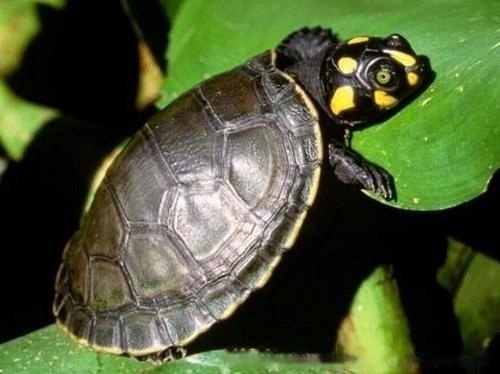Only by knowing yourself and your enemy can you be victorious in every battle. The person who knows you best must be your enemy. Because he wants to defeat you, he must find your weakness. In fact, we raise small animals, too. We must understand Their living habits, otherwise they don't know how the animals died, so in order to be able to raise tortoises more conveniently, we must have a certain understanding of tortoises. Let's take a look at the living habits and life characteristics of turtles together.

Habits of turtles
Turtles are semi-aquatic and semi-terrestrial reptiles. Mainly inhabits rivers, lakes, reservoirs, ponds and other waters. They spend most of their time in water during the day, and when the summer heats up, they seek shade in groups. Gentle temperament, no biting each other. When encountering an enemy or being frightened, it retracts its head, limbs and tail into its shell.
The tortoise is an omnivorous animal, with animal insects, worms, small fish, shrimp, snails, mussels, plant leaves, duckweed, melon rind, wheat Grain, rice, weed seeds, etc. for food. It has a strong ability to withstand hunger, and it will not starve to death if it does not eat for several months.
Turtles are ectothermic animals. When the water temperature drops below 10 ℃, it will hibernate in the bottom mud or loose soil with covering. The hibernation period is generally from January to the beginning of April of the following year. When the water temperature rises to 15°C, the acupoints are active, and the water temperature is 18°C-20°C to start feeding.
Although tortoises have a wide range of diets, their main food is animal food, such as small fish, shrimp, fish, earthworms and various small aquatic animals. They can also be fed some rice and noodles. Chips, soaked grains, chestnuts, bran powder, vegetable leaves, fruit pellets and other plant feeds, it is best to mix a little calcium and various vitamin tablets into the plant feed to make it grow better.
Feeding food, usually once every 3 days, the feeding amount can be increased or decreased according to the size of the turtle, generally 5%~10% of its body weight, in spring and autumn When the temperature is moderate and its appetite is strong, it can be appropriately increased. In addition, before winter comes, feed more than usual to prepare enough nutrients for hibernation.
The food to be fed should be fresh, especially in summer when the temperature is very high. Animal feed is easily deteriorated by heat. It is not suitable to feed overnight food. In cold winter, it is not suitable to feed frozen feed to prevent digestion. diseases, etc.
After feeding, if there is any leftover food, it should be cleaned up in time to avoid contamination of water quality and living environment, especially in summer.
The age and growth of the tortoise
There is no conclusion about how long the tortoise lives. Generally speaking, it can live for 100 years. More than 300 years, and some even more than a thousand years.
The growth of turtles is relatively slow. Under normal conditions, the growth rate of female turtles is: the first-year turtle weighs about 15 grams, the second-year turtle 50 grams, the third-year turtle 100 grams, and the fourth-year turtle 200 grams. Grams, five-year-old turtle 250-250 grams, six-year-old turtle about 400 grams. Male tortoises grow slowly, and the largest individual sexually mature is generally less than 250 grams.
![[Dog Training 5] The training method of pet dog dining etiquette](/static/img/12192/12192_1.jpg)




